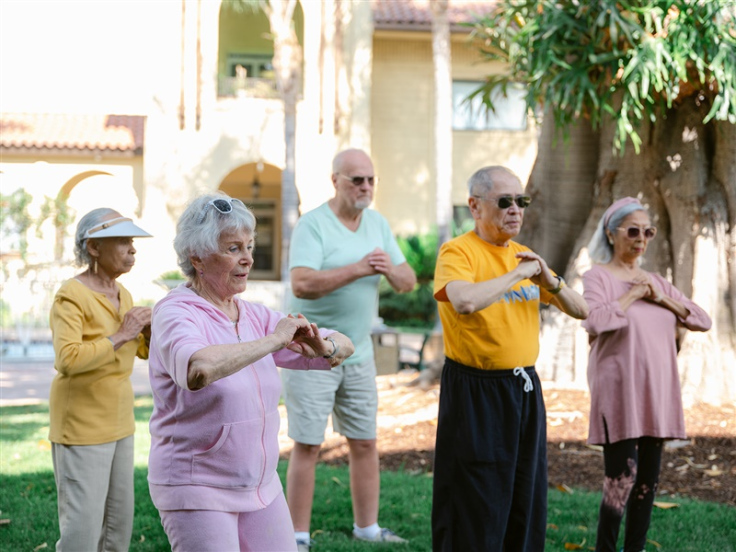Are Changing Attitudes And Demographics Beginning To Impact The Senior Care Industry?
The senior care living market is experiencing a tremendous period of growth and transformation as the needs of seniors, particularly the Baby Boomers, evolve. This age group has long been more active and vocal than their previous generation and they are being heard. Today's senior communities are becoming more personalized and reflective of the society we live in promoting the importance of diversity and inclusivity among their residents and offering care and food for both body and mind. As Zhana Dubin, Director of Marketing for Hollenbeck Palms, a non-profit organization and the oldest established senior community in California States:
"We are focused on supporting daily life that is full of engagement and inspiration. We're seeing residents come in who are active and expect to keep their independence and energetic lifestyle. We find our residents' expectations to be higher. Bingo is still an option, but they need a full-scale gym with a personal trainer as a prerequisite to call Hollenbeck home."
The United States senior care industry is a highly lucrative, competitive sector. The market is valued at almost $92.6 billion and is expected to grow 5% annually. Demand for assisted living options has increased exponentially and the overall trends of the market reflect the needs of a population that will be living, engaging in these communities for longer.

The historic idea of senior living communities being temporary homes has completely disappeared. These facilities have evolved from an institutional model into vibrant neighborhoods for living fulfilling lives. Cultural and societal norms have influenced these changes, but the sharp increase in human life expectancy is also responsible. Because this number is expected to rise from 76.4 years to 85.6 by 2060, these living communities must engage in a new type of care for a different kind of market. As Zhana Dubin adds:
"Book Clubs and lectures on various topics from visiting academics are part of the norm, for example, Hollenbeck Palm' s Armchair Astronomy classes are very popular. We also encourage seniors to pursue or initiate artistic endeavors and have a purpose-built Art Studio offering classes for all levels."
While over 33,000 assisted living facilities operate in the US, the populations of these communities are not as diverse as they could be. The largest ethnic group of residents nationwide is still Caucasian. Statistics have further illustrated that African Americans and Hispanic populations are most likely to avoid these facilities and live at home. There are some communities that do not follow this trend, states Zhana Dubin.
"At Hollenbeck, we pride ourselves on the fact that we reflect the diversity found in Los Angeles. Our unique location and ethnically diverse community have attracted Asian American, Latino and African American residents."
The nation's population is already home to many different cultures, but by 2044, minorities will become the majority. This demographic change requires senior living communities to be more intentionally inclusive of different races, genders, and sexualities.
Although many retirement communities fail to attract diverse seniors, this struggle is not intentional. Finding and accessing senior care options has always been difficult due to high expenses and the previous lack of personalized care that could satisfy all types of Americans. Creating marketing materials that show diverse representation has also been a developing effort on behalf of these providers. But now that communities are more abundant than ever, they have the ability to care for all people. As Zhana Dubin says:
"Diversity and inclusion are important aspects of life at Hollenbeck. We are a reflection of today's Los Angeles community and you will see that with what we offer and represent whether in our staff, Trustee members as well as our residents. Our goal is to make everyone feel at home here."
Affordable living options are now easier to locate and the cultural practice of generational living may become less popular since retirement communities can offer a unique sense of connection and engagement.
Credit: Hollenbeck Palms, Caption: Hollenbeck Palms
In addition to the demand for more inclusive senior care communities, AARP has highlighted important trends that have emerged post-COVID. While many of these changes have resulted because of health concerns, some are due to basic senior values that their living communities haven't respected previously. Redesigning living spaces, focusing on wellness, and integrating outdoor spaces are three of the biggest transitions this year. As Zhana Dubin reiterates:
"We are very fortunate that Hollenbeck Palms, the former home of the philanthropist Elizabeth Hollenbeck, is set in eight and a half acres of garden that is and was very used by our residents, especially during the Covid period. We have gardening, and walking clubs, as well as shuffleboard and a nine-hole putting green at our residents' disposal."
Since the pandemic caused severe isolation and depression among seniors in these facilities, providers are reimagining how their spaces can inspire interaction. Baby Boomers represent almost 21% of the US population and are the largest group of seniors. This is why Boomers are leading the revolution in the senior care industry. They are seeking more connection, personalization, and activities in their future retirement communities. Outdoor areas and mind and body activities are increasing in demand.As Zhana Dubin concludes:
"Our historic nondenominational chapel is used for classical musical performances, yoga, and meditation as well as worship. Tai chi is one of our most popular activities. We also have a garden of contemplation with a Koi Pond designed by a former resident."
Senior living communities that are struggling with these changes can look to many other providers that have succeeded. Hollenbeck Palms, the first licensed community of our type in California, has seen many trends within senior living practices rise and fall. They have always operated with innovation in mind, which is why they've remained one of the most respected living providers in Los Angeles.





















